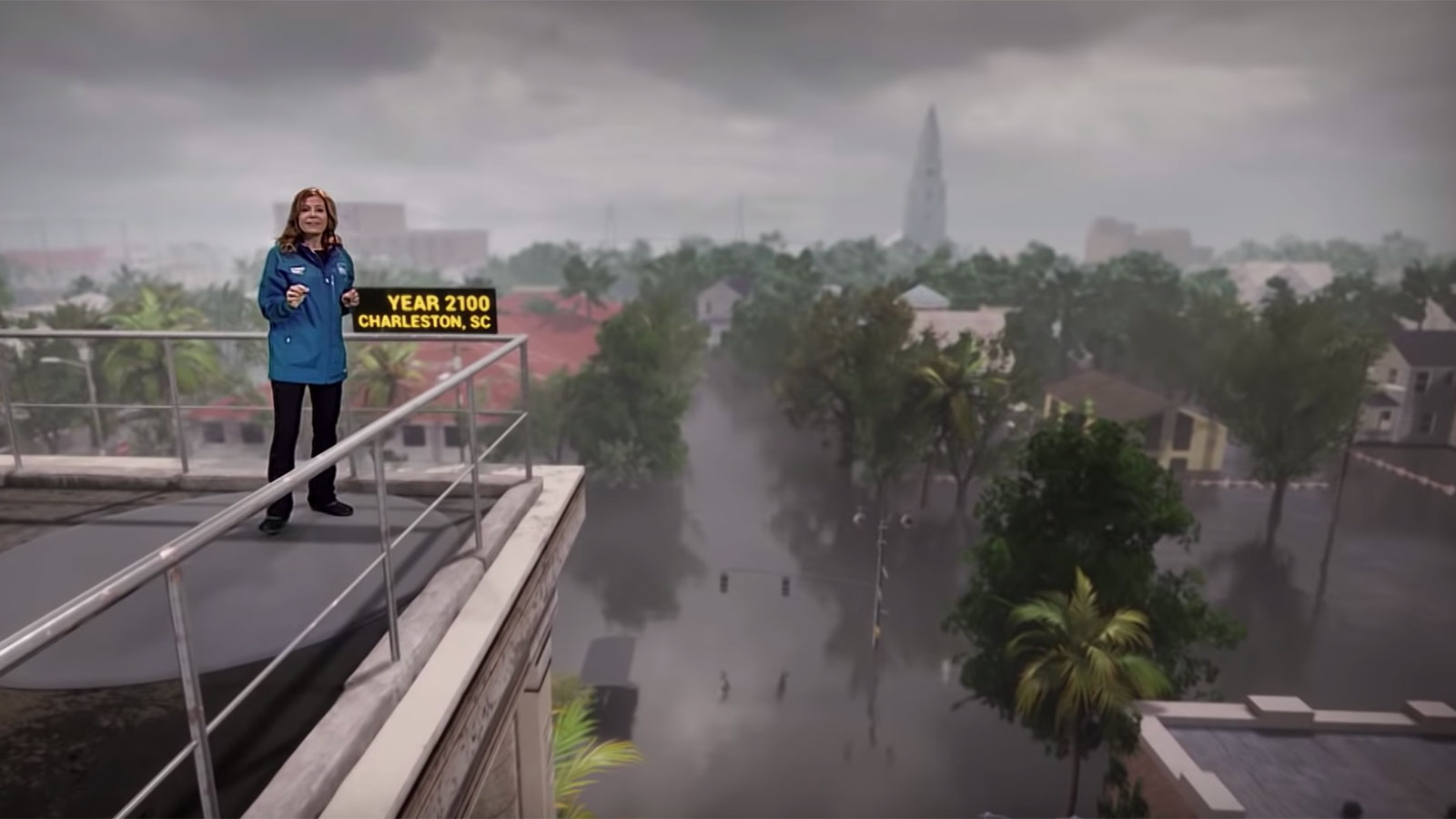“The Arctic — the fastest warming area on Earth,” Weather Channel meteorologist Jen Carfagno narrates in a new video as the camera speeds you under an iceberg arch, through the spray from a breaching whale, and past ice-capped peaks so realistic you can almost feel the Arctic chill. “Changes here are drastic, undeniable, and all too real.”
It’s the latest in a Weather Channel video series that uses immersive mixed reality technology to help you visualize extreme weather up close. The first video went viral last September, when meteorologist Erika Navarro was virtually transported from the studio to a flooded neighborhood street in North Carolina to demonstrate storm-surge projections for Hurricane Florence in person.
“For 30 years, weather presentation has been very consistent,” Michael Potts, the vice president of design at the Weather Channel, told New York Magazine’s Intelligencer. “Usually it’s a person in front of a map. We wanted to engage the audience more and find a way to go deeper into the science of weather.”
And, in this latest video, they do. Instead of regurgitating statistics or presenting another doomsday scenario, the video portrays global warming in a gripping yet realistic way, transporting you from a rooftop above flooded city streets to a rocky coast in front of a collapsing iceberg. Carfagno takes you from 1851 to 2100, visiting Charleston, South Carolina; Norfolk, Virginia; and Greenland’s famous Jakobshavn Glacier — all in the span of under two minutes. How’s that for high-speed time travel?
Using an immersive graphics technique popular in video games to produce the clip, the Weather Channel hopes to turn climate change into a vivid experience for viewers.
“By engaging our senses of sight and sounds — and our tendency to focus on things that move — they earn our full attention, and are experienced more like real lived experience than like book learning,” Edward Maibach, director of George Mason’s Center for Climate Change Communication, told the Verge.




